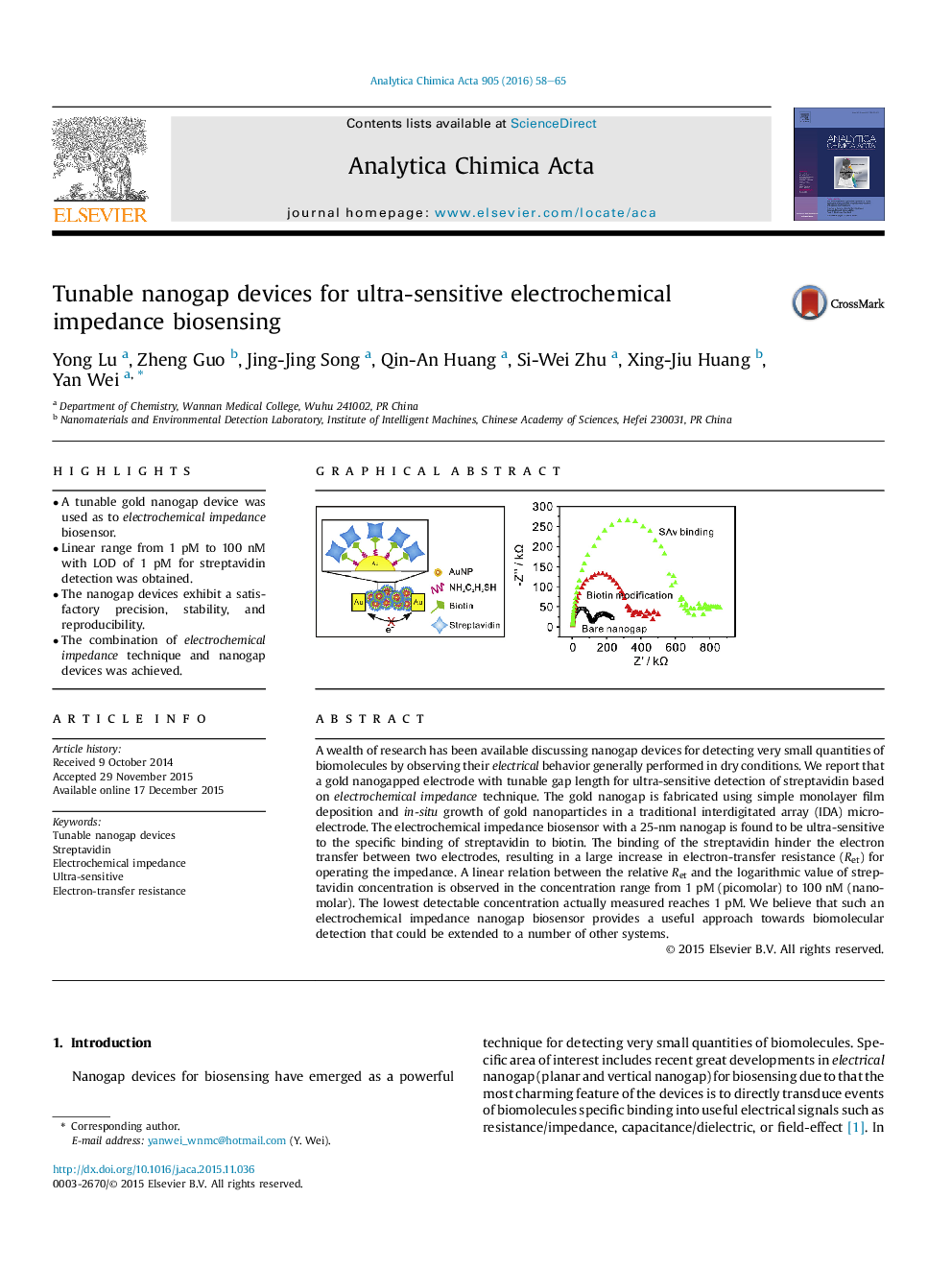| Article ID | Journal | Published Year | Pages | File Type |
|---|---|---|---|---|
| 1163170 | Analytica Chimica Acta | 2016 | 8 Pages |
•A tunable gold nanogap device was used as to electrochemical impedance biosensor.•Linear range from 1 pM to 100 nM with LOD of 1 pM for streptavidin detection was obtained.•The nanogap devices exhibit a satisfactory precision, stability, and reproducibility.•The combination of electrochemical impedance technique and nanogap devices was achieved.
A wealth of research has been available discussing nanogap devices for detecting very small quantities of biomolecules by observing their electrical behavior generally performed in dry conditions. We report that a gold nanogapped electrode with tunable gap length for ultra-sensitive detection of streptavidin based on electrochemical impedance technique. The gold nanogap is fabricated using simple monolayer film deposition and in-situ growth of gold nanoparticles in a traditional interdigitated array (IDA) microelectrode. The electrochemical impedance biosensor with a 25-nm nanogap is found to be ultra-sensitive to the specific binding of streptavidin to biotin. The binding of the streptavidin hinder the electron transfer between two electrodes, resulting in a large increase in electron-transfer resistance (Ret) for operating the impedance. A linear relation between the relative Ret and the logarithmic value of streptavidin concentration is observed in the concentration range from 1 pM (picomolar) to 100 nM (nanomolar). The lowest detectable concentration actually measured reaches 1 pM. We believe that such an electrochemical impedance nanogap biosensor provides a useful approach towards biomolecular detection that could be extended to a number of other systems.
Graphical abstractFigure optionsDownload full-size imageDownload as PowerPoint slide
